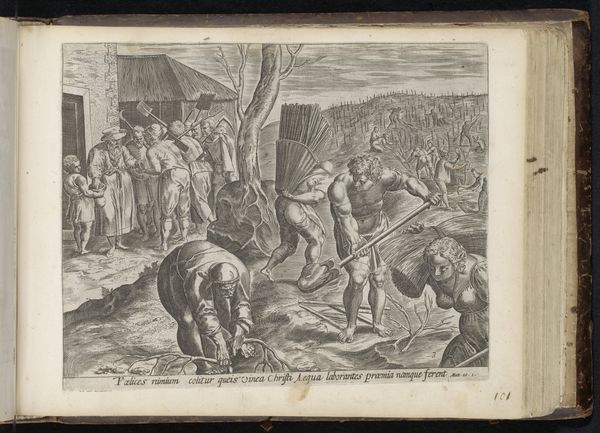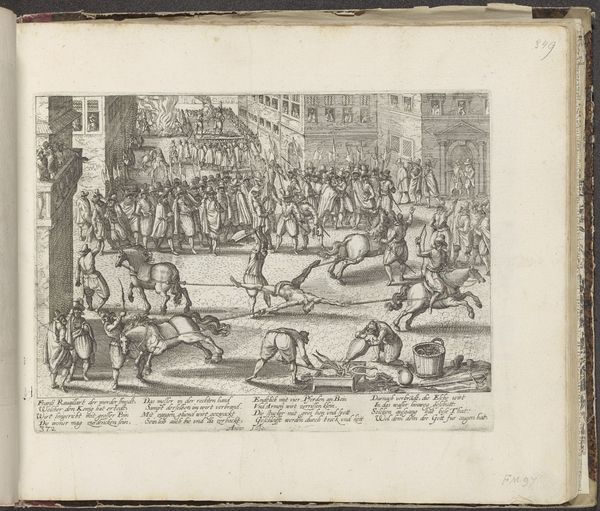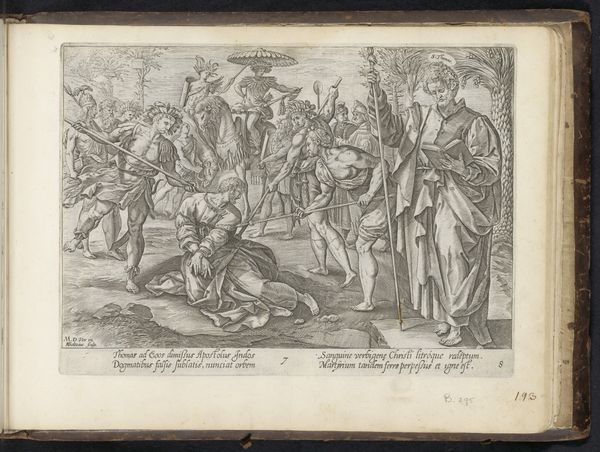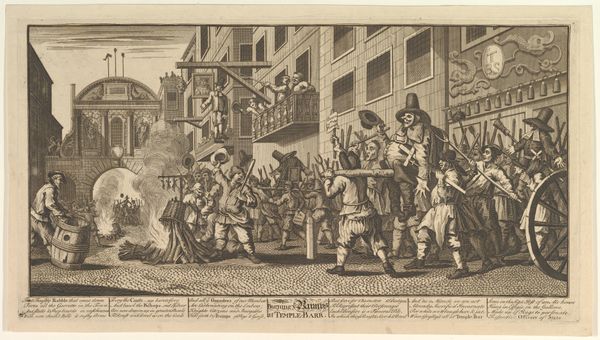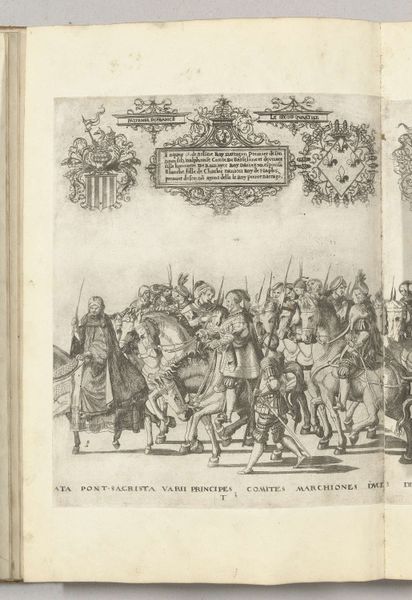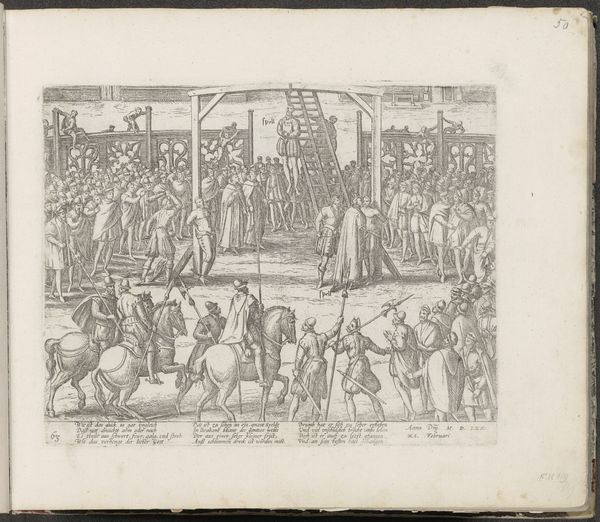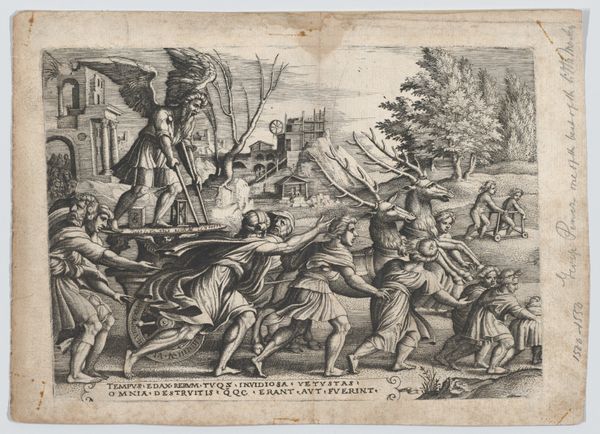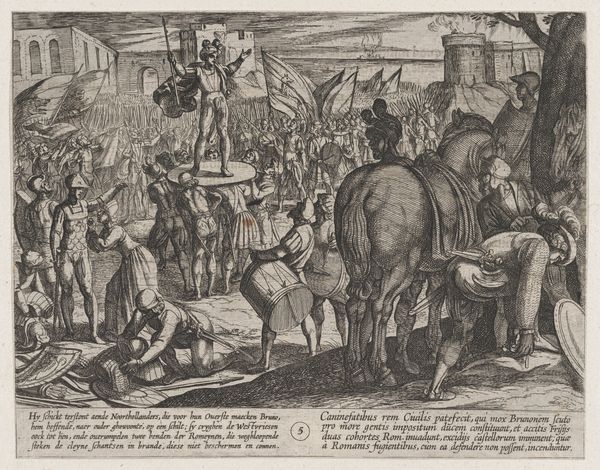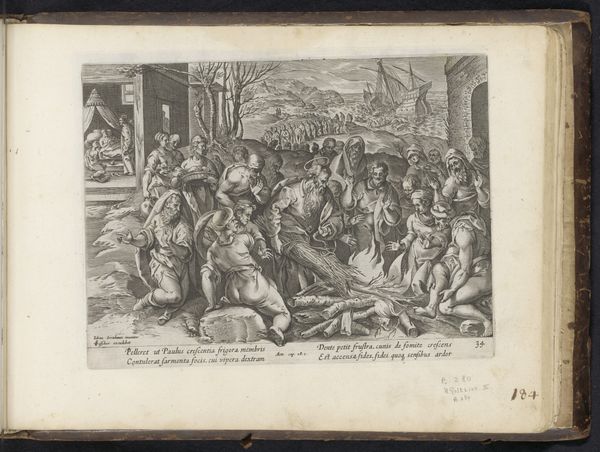
print, engraving
#
narrative-art
#
baroque
#
pen drawing
# print
#
figuration
#
pen-ink sketch
#
engraving
Dimensions: height 216 mm, width 285 mm
Copyright: Rijks Museum: Open Domain
Curator: This engraving, crafted in 1720, is titled "John Law op de ezel van Sancho Panza," currently held here at the Rijksmuseum. Anonymously created, it's a remarkably detailed print. Editor: It feels… chaotic. A central figure perched atop a donkey is the focal point, but the energy radiating from the surrounding figures, their gestures, the overturned objects… it all conveys a sense of societal upheaval. What's the story here? Curator: Precisely! The "story" as it were, revolves around John Law, the Scottish economist whose Mississippi Company scheme led to France's first major stock market bubble. He’s depicted riding the donkey, echoing the story of Don Quixote and Sancho Panza. Look closer at those scattered items. Editor: Ah, I see playing cards, papers… Are these symbols of frivolous activities, highlighting the speculative frenzy of the time? The dragon-like figure breathing onto the donkey seems deliberately provocative. Curator: Spot on! The imagery, as you noticed, is loaded with symbolism. The playing cards and scattered papers do represent the risks and perceived foolishness of the financial speculation of Law's scheme. Law himself becomes a caricature of misguided ambition and excess, doomed to fall from grace, as Quixote himself was. Consider how printed ephemera like this served to disseminate public sentiment and criticism of the financial systems being made material. Editor: And those numerous figures surging forward seem to represent the general populace caught up in this frenzy? Some are reaching for him, others pulling back... Such tension! The use of engraving allows for incredibly fine lines, creating an almost dizzying level of detail, heightening that chaotic sense of mania and collective hysteria. It's striking. Curator: Right! The printing medium, in its reproducibility and wide circulation, became integral to how economic events unfolded. Prints and printed material created narratives in which the very production of those images reinforced class and hierarchy during a critical historical period. Editor: This makes you realize the power of this little etching. Thank you for shedding some light into how financial critique was made literal through social and material circumstances. Curator: Indeed, the economic is very often material, and the images produced in their wake hold tremendous weight.
Comments
No comments
Be the first to comment and join the conversation on the ultimate creative platform.
